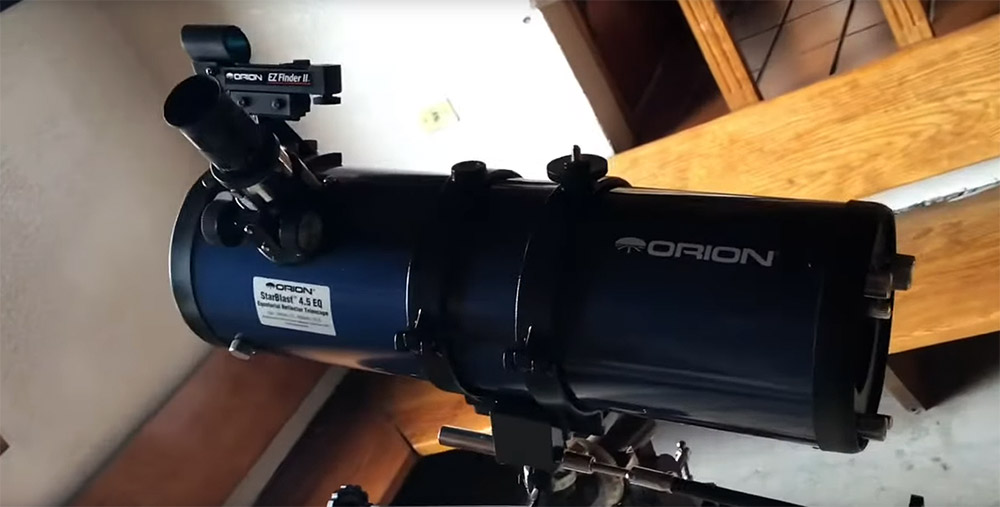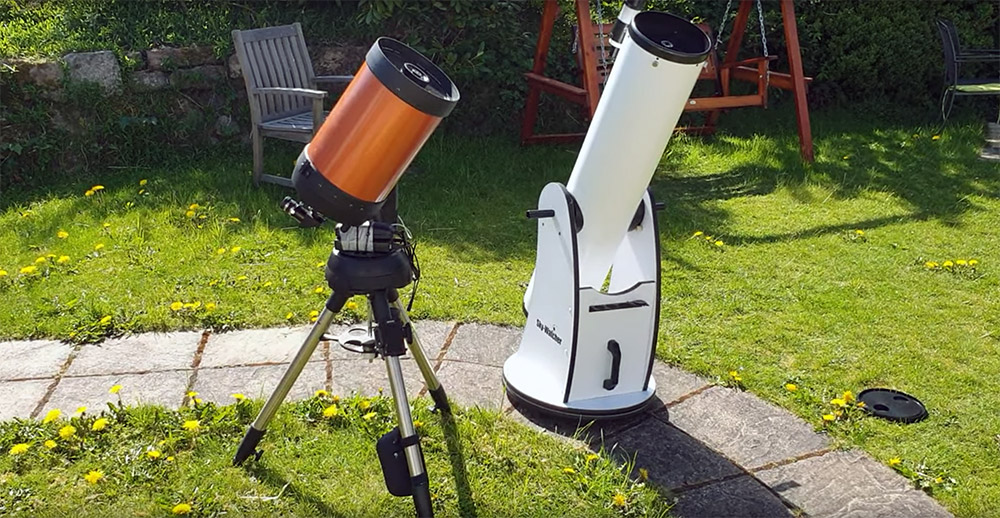The reflecting telescope was invented over 2 centuries ago. The design is still used to this day and is one of the most popular amongst amateur and professional astronomers.
In fact, most of the giant telescopes used in observatories are, in essence, reflecting telescopes. Even the Hubble space telescope is a variant of one called a Cassegrain reflector.
If you are new to the world of telescopes, it can be difficult to decide which type is the best fit for your needs. This is why this article will guide you through the pros and cons of reflecting telescopes so you can decide if one is a good option for you.
First things first.
What is a reflecting telescope?

The reflecting telescope – also known as reflectors – is a type of telescope that was invented by Isaac Newton as an improvement to the existing designs of the time like refractors. This is why they are also referred to as Newtonian telescopes.
The most notable changes in reflecting telescopes are:
- As their name implies, reflectors add a secondary mirror at the end of the tube and a smaller one in the middle. These reflect the light to the eyepiece that is located at in the middle of the tube instead of the backside.
- Reflecting telescopes use mirrors instead of lenses. This fixes one of the most notable limitations of refracting scopes which is chromatic (color) errors. However, this change also comes with some trade-offs that are discussed below in the cons section.
The design of reflectors allows for larger apertures. This lets them capture significantly more light and reach higher magnification levels.
This makes reflector telescopes more versatile and has derived into multiple sub-designs.
Types of reflecting telescopes.
Newtonian telescopes. This is the traditional reflector design. It consists of large tubes on top of a tripod.
Dobsonian telescopes. Dobsonians are reflectors so large they can’t be put on top of a tripod and instead are put on top of a “dob mount”, which is in essence an alt-azimuth mount that only moves on two axes. They are easy to build so they are extremely popular in the DIY telescope community.
Cassegrain telescopes. Cassegrain telescopes, also known as compounds, are the most modern telescope design on the market. They increase the focal length by bouncing the light multiple times inside the tube. They are compact in size, but extremely powerful.
Advantages (pros) of reflecting telescopes

- Reflectors fix both of the major optical limitations of refractors. Chromatic aberrations (color rings and false colors) and spherical aberrations (blurry edges).
- The mirrors in reflecting telescopes are cheaper to manufacture than lenses, especially in large sizes. This allows them to be produced in larger sizes that make more powerful scopes.
- They have a much better price-to-size ratio.
- Even though reflectors are slightly more complicated for beginners, they will grow with you. This gives them a longer lifespan as your first telescope and you will not feel like they are limiting your learning process.
- You can build your own reflector. The mirrors are easy to manufacture so there are many places where you can get them. There is a whole community built around DIY telescopes.
- Mirrors are generally more durable than lenses. Reflectors tend to have longer lifespans if they are properly taken care of.
- Thanks to the above, the mirrors in reflectors can be replaced if something happens to them.
Cassegrain telescopes advantages
- Cassegrain reflectors have compact tubes. Making them extremely portable.
- Because of their design, they have very long focal lengths for their size, making them ideal for planetary viewing.
- The sophisticated compound design offers superior optics.
Here’s a complete article on the pros and cons of Schmidt-Cassegrain telescopes.
Dobsonian telescope advantages
- They pack a lot of power for a low price.
Disadvantages (cons) of reflecting telescopes
- Reflectors have some minor limitations when it comes to contrast and brightness.
- The larger bodies make them less portable, so they are harder to travel with. The exception to this rule are Cassegrains.
- Newtonians have open tube designs, which means they need to be cleaned occasionally and you need to be more careful about keeping them away from smoke and humidity. (check our guide on telescope storage)
- Speaking of maintenance, the mirrors need to be aligned occasionally. This is called collimation and takes between 5 minutes to 1 hour depending on the type of reflector you have and your level of experience.
- The front mirror’s coating needs to be replaced every few years.
- Due to the light bouncing on multiple mirrors, reflectors are for the most part considered “slow” telescopes. Due to this, they perform slightly worse in some astrophotography use cases.
Summary
- Reflecting (Newtonian) telescopes are the most popular design if your primary concern is power.
- The advantages of reflectors include large apertures, no chromatic aberrations, and excellent price to value ratio.
- The disadvantages are lack of portability, lower contrast, and higher maintenance requirements.







